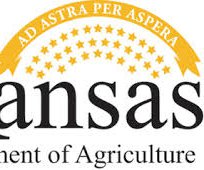COVID-19 has caused a decline in program attendance at the Kansas Wetlands Education Center for the past two years, but attendance is slowly returning to pre-pandemic levels, Site Manager Curtis Wolf said. Meanwhile, the numbers of visiting whooping cranes at area wetlands have increased, Wolf told members of the Great Bend Kiwanis Club when he spoke there earlier this month.
“This year has been a phenomenal whooping crane year in this area,” Wolf said. “Because there’s quite a few more birds now – we have about 500 that could potentially come through here – it’s kind of hard to keep track of who’s who. So we’ll get cranes in and then you don’t know the next day if it was the same ones.”
Management at Stafford County’s Quivira National Wildlife Refuge estimated they had about 90 whooping cranes come through in November, Wolf said. He didn’t know what the numbers were at the Cheyenne Bottoms Wildlife Area in Barton County, but the whooping cranes did stay longer than usual. One group of 15 whooping cranes arrived on Nov. 4 and stayed for almost a month.
Endangered species
Whooping cranes are the most endangered bird in North America, with only about 800 in the world today. These bright white cranes are also the tallest bird in North America; they stand about 5 feet tall, with a 7-foot wingspan.
“If you go back to the 1940s, there were only 16 of them left in the world,” Wolf said. “They were on the brink of extinction.” Placed under protection, their numbers steadily improved. There were still fewer than 35 birds in 1960 and then they saw an upswing.
“In 2006 there were 200 birds, and then today, there are over 500 of them that are in this flyway (the Central Flyway), and there are several experimental groups as well. Overall, there are about 800 birds.”
Historically, they migrated and bred throughout the eastern two-thirds of the United States. But by 1900 whooping cranes were gone from most of their historical areas.
“Right now there’s the Central Flyway flock, which is the only natural flock that migrates and they’re the ones that come through here,” Wolf said. “There are about 500. They breed in northern Canada at a place called Wood Buffalo National Park and then they follow basically the Central Flyway, coming through Kansas. And then most of these go down and overwinter down on the Texas coast at Aransas National Wildlife Refuge.”
Both sandhill cranes and whooping cranes feed, roost and nest in shallow-water wetlands, Wolf said.
“Whooping cranes can live up to 30 years in the wild. They do mate for life but they don’t begin breeding until they’re 3 to 5 years old. That’s one of the reasons why their numbers took so long to recover,” Wolf said.
Human visitors return
The number of human visitors to the KWEC has been slowly returning to pre-pandemic levels, Wolf said.
“Interestingly enough, we have done more van tours this fall than we’ve ever done.” The personalized van tours allow groups of up to 11 people to visit the Cheyenne Bottoms Wildlife Area with an expert guide.
Tours are by reservation only and are dependent on the weather and the availability of tour guides. A 30-minute “Get to Know Cheyenne Bottoms Tour” costs $3 for adults, $1.50 for children under 12 and is free for kids younger than 4 years old. The “Cheyenne Bottoms Deluxe Tour” lasts approximately 90 minutes. It focuses on bird/wildlife identification and will also include a stop at the K-4 Cheyenne Bottoms overlook. The cost for this tour is $5 for adults, $3 for children under 12 and free for children under 4.
The KWEC, managed by Fort Hays State University, is located in Barton County at 592 NE K-156. Hours are 9 a.m. to 5 p.m. Tuesday through Saturday and 1-5 p.m. Sunday (excluding holidays). The telephone number is 620-566-1456 and the toll-free number is 877-243-9268.
George Stumps Nature Trail
Visitors to the KWEC may also take a leisurely stroll on the George Stumps Nature Trail next to the Center. Wintering songbirds are attracted to feeders near the trail head, which is located at the west end of the Center’s parking lot.
Looping approximately a half-mile, the level-paved trail is wheelchair accessible. It is sponsored by Ducks Unlimited.





